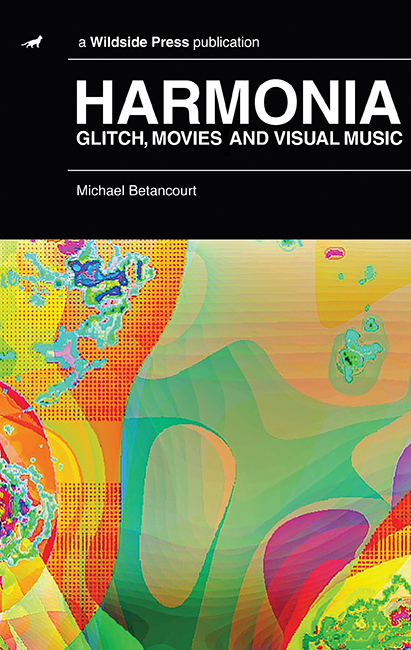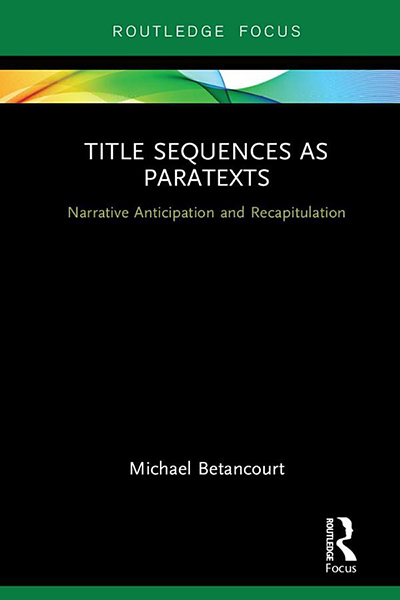PORTFOLIO |
 |
|
|
|
|
|
 |

|
| |

|
| |
 |
Harmonia: Glitch, Movies and Visual Music - Now Available!
story © Michael Betancourt | published January 9, 2018 | permalink |



 |
| 
|
 |


|
 |

Harmonia, �harmonies,� analyzes the connections between glitch art, visual music, abstraction, and motion pictures. This collection is a chronological survey of glitch art pioneer Michael Betancourt�s artistic research into, around, and with digital motion pictures that theorizes and critiques visual music. This anthology is directly connected to his critical engagement with the socio-cultural meaning of �visionary art� that builds on the work of Umberto Eco and Michel Foucault to engage with the historical films of John Whitney, Mary Ellen Bute, Mary Hallock-Greenewalt, and Stan Brakhage (among others) connecting them with contemporary glitch movies. Included in this collection is his taxonomy of abstract forms based on synaesthesia, a discussion of the historical foundations and connections between color music/color organs, synaesthesia and the visual music instruments and films of the twentieth century, and an analysis of the fundamental connections between visual music and realism that reveals an ideological reification created by the synchronization of sound and image. This analysis goes beyond a historical recounting of artists and their works to propose an understanding of synaesthetic media in aesthetic as well as critical, ideological terms. Included are the essays �The Aura of the Digital,� �The Invention of Glitch Video,� �Semiotics of the Moon as Fantasy and Destination,� and �Welcome to Cyberia� along with many other talks, publications, and analyses of glitch art and visual music.
Harmonia: Glitch, Movies and Visual Music is an anthology of my writing on glitch and visual music. It's available in hardcover and paperback, 240 pages.
|

|
|
|

|
| |
 |
Title Sequences as Paratexts - Now Available!
story © Michael Betancourt | published November 2, 2017 | permalink |



 |
| 
|
 |


|
 |
|
You can now order my new book Title Sequences as Paratexts: Narrative Anticipation and Recapitulation!

It's part of the Routledge Studies in Media Theory and Practice series, and offers an analysis of the relationship between the title sequence and its primary text�the narrative whose production the titles credit. Using a wealth of examples drawn from across film history�ranging from White Zombie (1931), Citizen Kane (1940) and Bullitt (1968) to Prince of Darkness (1987), Mission: Impossible (1996), Sucker Punch (2011) and Guardians of the Galaxy, Vol. 2 (2017)�Betancourt develops an understanding of how the audience interprets title sequences as instances of paranarrative, simultaneously engaging them as both narrative exposition and as credits for the production. This theory of cinematic paratexts, while focused on the title sequence, has application to trailers, commercials, and other media as well.
|

|
|
|

|
| |

|
| |
|
|
|